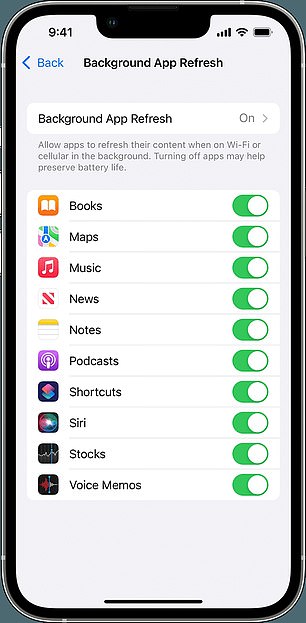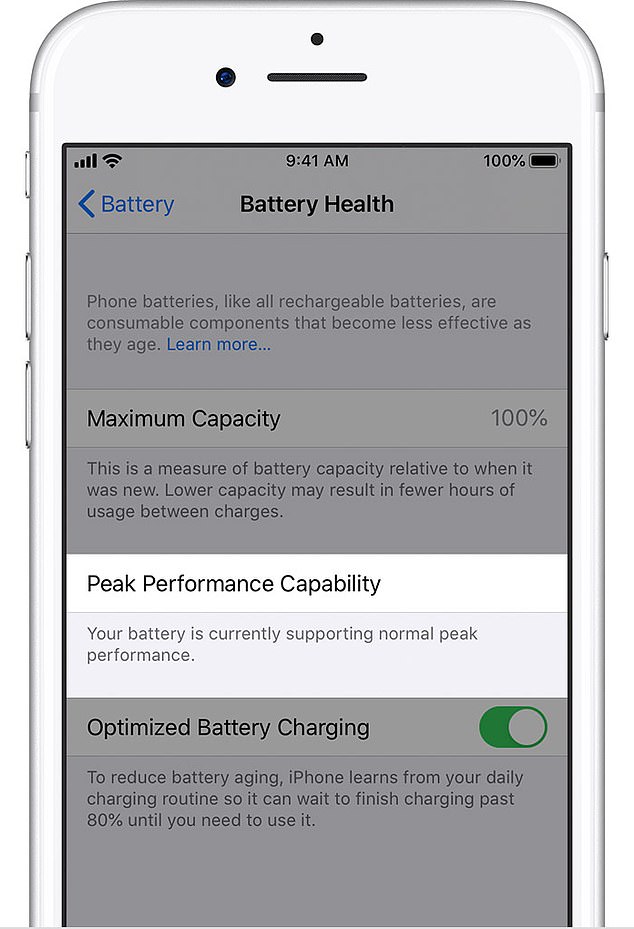I’m a phone repair expert – here are five ways to speed up your old iPhone amid fears of another ‘battery gate’
>
With the launch of the iPhone 15 looming, owners of older iPhones are preparing for their devices to slow down, but there are some tricks to counteract the dreaded slowdown.
Apple previously faced fines and a $115 million settlement over a “batterygate” controversy in which older phones were deliberately made slow – though Apple said this was to save battery life.
Apple fans have long believed that iOS updates (especially those around the launch of a new device) can slow down older devices — but there are steps to be taken, a phone refurbishment expert told DailyMail.com.
Kewin Charron, Senior Lead Refurbishment Operations Manager at Back Market said: “As the cost of smartphones continues to rise, choosing to repair and extend the life of your device not only offers a more sustainable alternative to purchasing new technology, but is it is also a considerably more sustainable alternative. economic choice.’
If your iPhone is slowing down, Charron recommends taking the following steps:
Kewin Charron, Senior Lead Refurbishment Operations Manager at Back Market
Stop apps slowing down your phone

Do background apps slow down your phone? (Apple)
Today’s iPhones contain more apps than ever before — and if you have a lot of them installed, they can slow down your device, Charron said.
These apps typically consume significant amounts of RAM and CPU resources (which can slow down your phone) while running in the background, often without the user being aware of it.
Charron said, “A simple hack to speed up your old iPhone is to go to Settings > General > Background App Refresh and select Wi-Fi, Wi-Fi and Cellular Data, or Off to disable the refresh of stop the background app completely.
This quick fix means iPhone users can adjust their settings to automatically manage and stop apps running in the background; making the phone run smoother.’
Check the health of your battery
Your slow iPhone could be due to a battery issue, Charron said.
Even newer batteries can fail if they are faulty or overused.
If you’re using iPhone 6 or later (with an updated version of iOS), go to Settings > Battery > Battery Status to view the maximum capacity of your battery.
This should be somewhere between 0 and 100%.
Charron said, “A typical Apple battery should retain up to 80% of its original capacity.
“As the battery ages, this percentage can decrease, so the battery can no longer hold the charge.”
If it’s lower, you should consider taking it to a repair shop and replacing the battery, Charron said.
Check peak performance

Check your phone’s maximum battery performance (Apple)
There’s another stat hidden in iPhone menus that’s definitely worth looking at, Charron advised.
Charron said, “Under the ‘Battery Health’ segment, it’s also worth looking at ‘Peak Performance Capacity’.
This particular metric provides valuable information about the battery’s performance status and shows whether the battery is working properly or not.
If you discover a malfunction in your battery, it may be wise to opt for a replacement.’
Unclog your memory
Slow iPhone performance can stem from limited storage capacity, with full or near-full storage resulting in less available memory and impacting CPU performance, slowing down your phone, Charron said.
Charron said, “iPhones require about 10 percent of available storage space for caching and temporary files that allow smooth running of apps and software updates.
“To improve the speed of your iPhone, spend time reviewing installed applications and uninstalling applications you no longer need.
“Sorting old photos and videos and eliminating unnecessary content is also helpful.”
The nuclear option
If your phone doesn’t respond to the other tips, restore it to its default settings, that is, how it was before you started using it, Charron said.
This can remove “hidden” data that could slow down your device, Charron said.
He said, “For a more thorough storage cleanup, backup your phone data first.
Then restore the device to default settings before reapplying the backup. This process deletes cached data and clears the phone’s ‘other’ storage. You can also uninstall and reinstall specific apps.”
